Succulents are low-care starter plants for anyone easing into gardening or short on space. Best of all, they’re typically the lowest water users of the plant world. It’s often said that cacti and succulents thrive on neglect. Although that might be true when it comes to maintenance such as trimming or fertilizing, cacti and succulents do need a little attention and consistent, light watering.
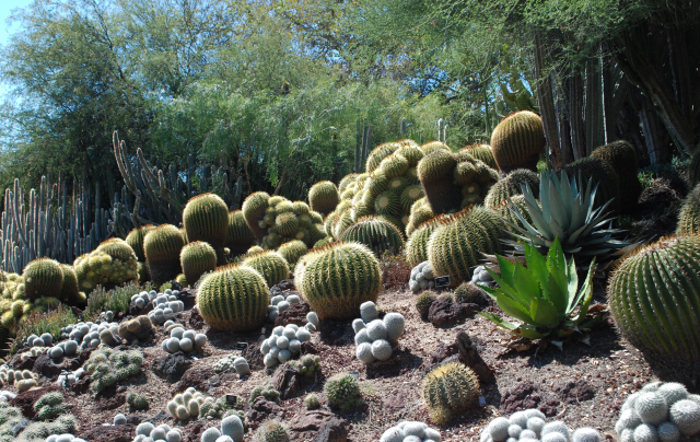
Rocks, heat, hills that drain water. These conditions make cacti happy. This image was taken at the Huntington Library and Botanical Gardens in San Marino, Calif.
Water Sparingly
The common characteristic of succulents is that they have adapted to surviving with little water. Cacti are tough, and about the only thing that will kill them (other than being munched or trampled by wildlife) is overwatering. In general, about once a week is perfect. Set a date every Saturday morning, for instance, to water and check on indoor succulents.
The best way to water container succulents is by making two trips – water your succulents once with a slow, steady stream. Don’t give them so much water that it runs out the bottom of the container, but give them enough to soak in past the surface. Then come back and give them a second drink, which makes for a deeper and more even watering.
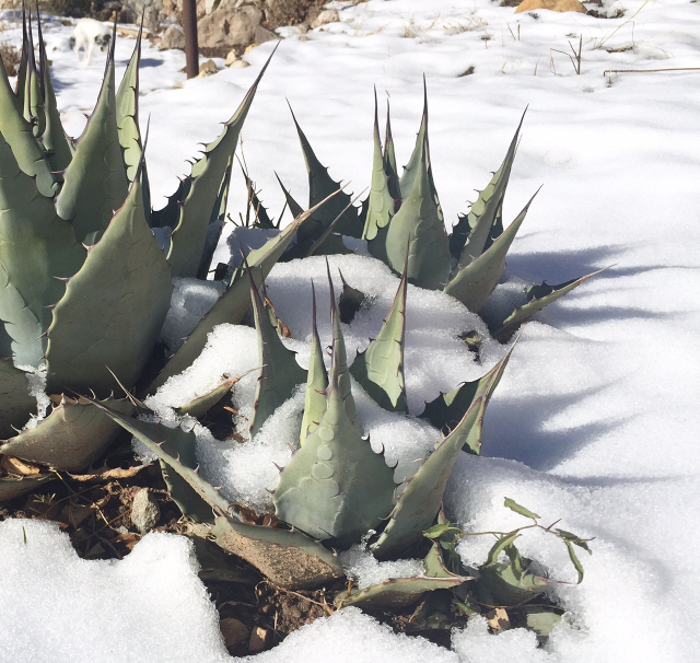
These agave survive outdoors here in zone 6B. We don’t water them, but from time to time, nature does the job.
The best watering for outdoor succulents is through a steady drip. How much depends on conditions, just like with other plants. When heat is extreme, cacti and succulents need a little more water. When it rains, you can skip watering altogether. If you bring cacti indoors for winter, they need a little more water in a hot, dry and sunny room.
Watering Succulents While Transplanting and Repotting
Have you ever seen a photo of an avocado pit in a glass with roots sprouting from the pit? Like most plants, lots of water encourages roots to grow. The same goes when placing most new plants in the ground or a new container—extra, deep watering helps roots establish. But that’s not true of succulents. They need time to heal before you water. In fact, taking a cutting from a cactus to grow a new plant (propagating) means letting the cutting rest and dry before putting in soil!

Propagated many of these succulents from cuttings.
If you want a mixed arrangement indoors or out, try to make sure your cactus or succulent receives only the water it needs. In the landscape, you can mound the dirt under the plant slightly so that water drains to nearby plants with higher water needs or have a dedicated drip for the succulent that emits less water. Avoid spray irrigation, especially on succulents. In container arrangements, keep your cactus in a small plastic container half-buried in the container’s soil. This helps the gardener pour more water to flowers around the cactus than directly on it, which helps keep the cactus soil from getting soggy.
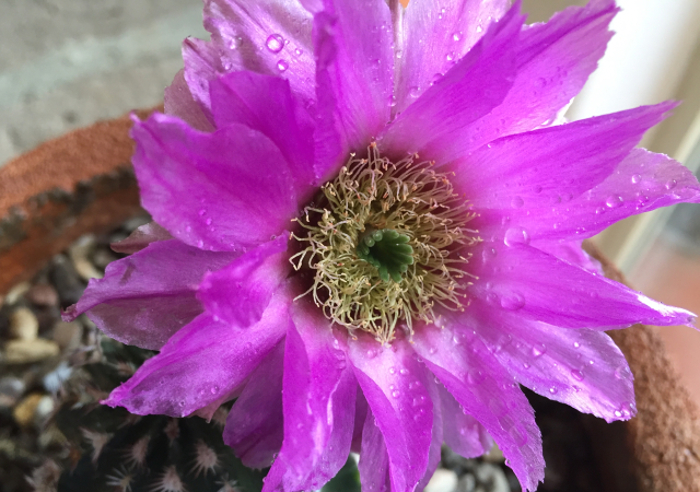
This as-yet unidentified cactus (most likely a Mammillaria) came from ranch land east of Roswell, N.M. It’s been happy in a container, spending summer on the patio and winter in a south-facing window.
How Much Water Does Your Succulent Need?
All cacti are succulents, but not all succulents are in the cactus (Cactaceae) family. In general, succulents are known for their fleshy leaves that hold water. Their leaves usually are small as well – leaving less surface for transpiration, which is the plant equivalent of evaporation.
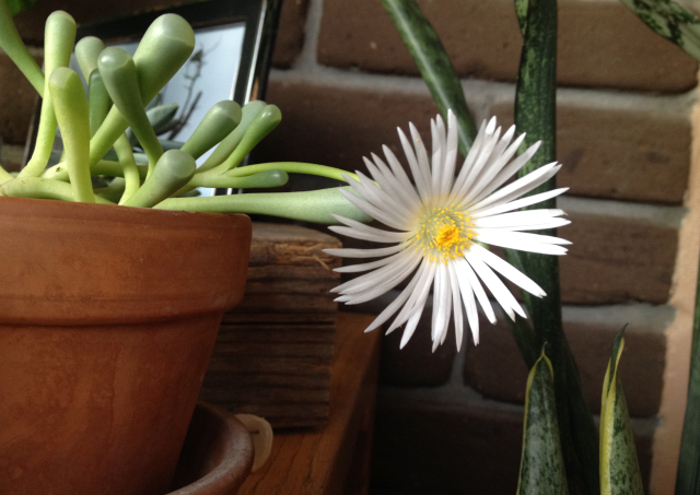
Baby toes (Fenestraria) are so-named for their swollen ends, a classic succulent survival feature. The flowers are pretty awesome too.
Just like with trees or flowers, every type of cactus and succulent is a little different. For example, Adenium, commonly called desert rose, is a gorgeous succulent member of the Apocynaceae family, the same one that includes oleanders. Knowing that helps: First, the only true pest of adenium is an oleander caterpillar. Second, although technically a succulent, when the plant is in full leaf and flower season, it needs a lot of energy (sun and water) and can be treated more like a tropical plant. But adeniums drop their leaves in winter, even in indoor containers. When they go dormant, they need little to no water.

The Desert Rose (Adenium) drops its leaves in winter and needs little water while dormant (resting). When it starts getting flower buds, it needs a little more.
In fact, that’s true of nearly all cacti and succulents – they need more water (and some fertilizer) during their growing/flowering periods and just enough to get by when dormant. Most will flower and grow in spring, fall and cooler parts of summer. High summer heat can make them dormant as a survival tactic.
It’s easy to research cacti and succulents in regional garden books and online, using reputable and regional sources when possible.
Watering Succulents After Repotting
Although most cacti and succulents grow more slowly than typical garden or house plants, they can outgrow their pots.
In addition, succulents grown in pots and watered from a tap can have problems when minerals from the water build up in the soil. That’s a second reason to repot. You can avoid the mineral build-up by using rainwater for cacti and succulents instead of tap. Be sure your plant is in a container that drains well. That means drilling holes in the bottom of any containers that lack them and filling them with planting medium only (no rock or other filtering materials at the bottom).
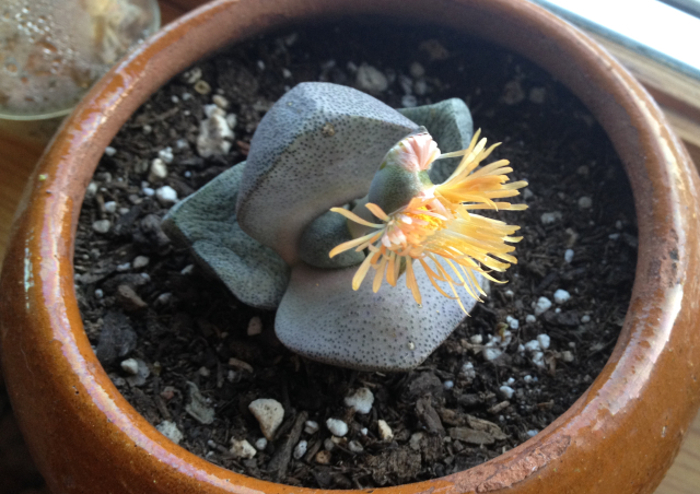
The split rock cactus (Pleiospilos nelii) is native to South Africa and does well in a container, as long a you cut back on water in the heat of summer and cold of winter.
Of course, soil, location or zone and other factors affect the health and water needs of cacti and succulent. But most adapt to soil and environmental conditions.
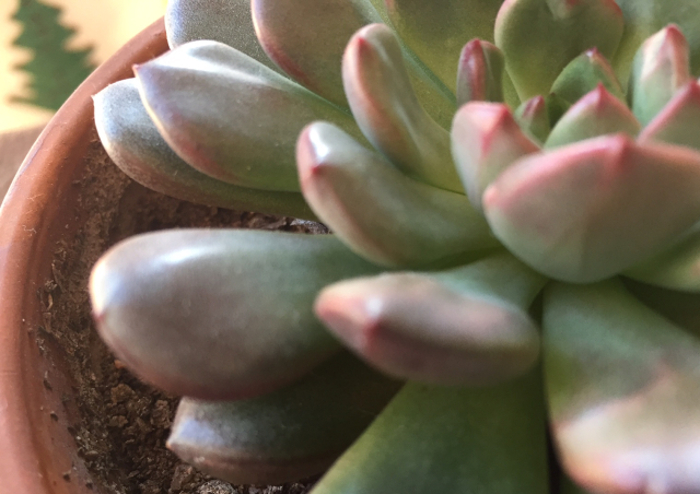
The fleshy leaves of an echeveria. These are such pretty and easy-care succulents.
 |
Author Teresa Odle - Published 12-10-2020 |
